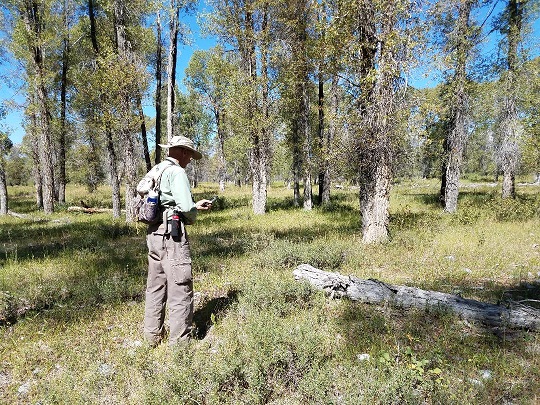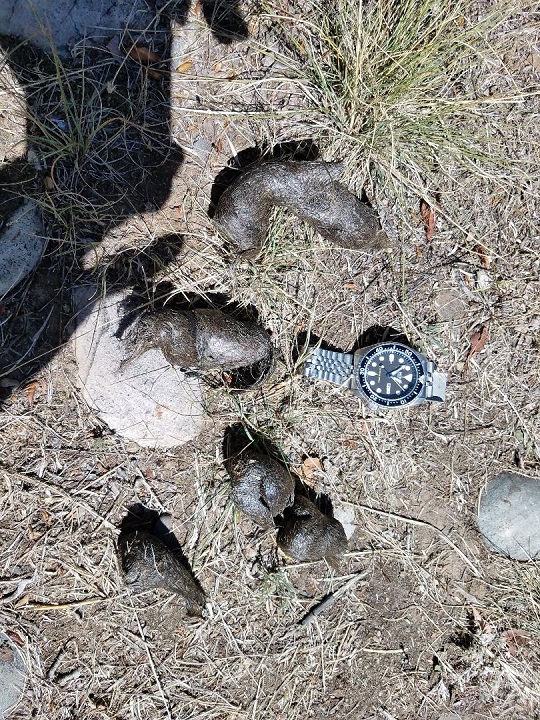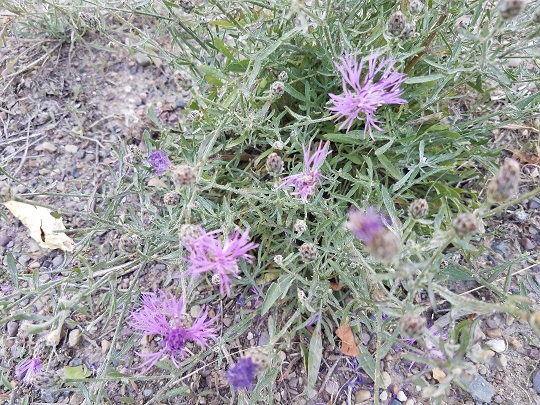How difficult could it be? Eric, the biologist at the National Elk Refuge, asked if we would map invasive spotted knapweed grass in a remote area on the north end of the Refuge. Last year we mapped cheatgrass on Miller Butte on the south end of the Refuge, and that proved difficult because of its steep inclines. But the north end? The wetlands there are fairly flat. We assumed that meant it would be a lot easier.
Like It or Not
“You might not like it,” he warned us. But we felt sure that if we could accomplish a similar chore last year, this one would be a cinch.
Identifying Knapweed
We met Eric at the north end of the Refuge one afternoon so he could show us what spotted knapweed, this year’s target invasive, looked like. As predicted, the remote area appeared fairly flat. As we walked it, however, we realized it was crisscrossed with a spiderweb of tributaries from nearby Gros Ventre River — some dry beds lined with river rock the size of cantaloupes, some still flowing with water. Cottonwoods and willows covered some of the terrain, punctuated by unidentified but impenetrable vegetation. Not only that, but grasses were chest-high in many areas, hiding logs easily tripped over and badger holes easily fallen into.
Moose?
“Good moose country,” we commented, and Eric agreed, confirming that we should keep our bear spray handy and our eyes peeled for any critter activity. We’d already spotted one mature bull elk, huge antlers adorning his head, and we’d come across several tracks and daybeds from at least five others.
Purple Carpet
During the next few weeks, as we spent hours mapping spotted knapweed, this invasive grass began blooming purple flowers. The closer to the main branch of the river, the more knapweed had spread into a purple carpet. “How could anything that beautiful be so noxious?” we wondered. But spotted knapweed, we learned, creates dense stands that crowd out native species. Its large taproot helps it survive fires to produce large quantities of seed that thrive when other plants cannot.
[twocol_one]

[/twocol_one] [twocol_one_last]

[/twocol_one_last]
As expected, however, to perform this job we forded the little tributaries, stumbled over river rock, tripped on unseen logs and branches, and fell into concealed badger holes, all the while taking an occasional pratfall, continually on the lookout for anything that might want to stomp us, gore us, bite us, or in any way harm us.
Wolves
Perhaps the reason we didn’t encounter any moose had to do with the four wolves trotting ahead of us on the two-track road one day. As many times as we had worked the north end of the Refuge over the years, we had never before seen wolves in this area. “They look like youngsters,” Chuck said. We watched them through our binoculars for some time, finally judging that they had no interest in us as they continued on their way.

Preferred Work
Mapping the invasive grass proved to us once again that biology work can be difficult, arduous, and even dangerous. But, as always, we realized that we were having a good time, acquiring a learning experience, and appreciating that it sure beats sitting behind a desk!


As usual, BETTY, you drew me in until the as period….thank you for sharing!
Carol, thanks for “riding along” and your usual great comments!!
I have never seen wolf scat that looked like a watch before. Did they eat a hiker?
Haven’t seen you for a while, so I thought you might have been a casualty. I’m glad you had time to feed the wolves!